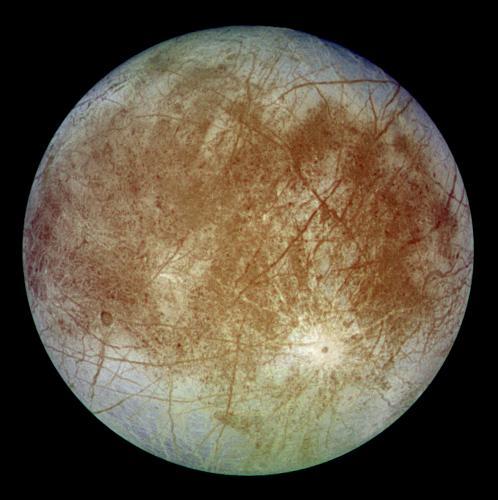The images and other scientific information collected by the Galileo spacecraft indicate the existence of oceans under the moon's ice cover. As we know, water is one of the essential factors for sustaining life

Europa, the icy moon of Jupiter, has aroused the curiosity of many astronomers in recent years, and the Galileo spacecraft - whose original purpose was to study Jupiter - has mainly focused on it in the last two years. Even if there is no evidence of life on Europa, the images and other scientific information collected (slowly though, since due to a malfunction Galileo's transmitter is only able to transmit one thousand bits per second instead of 130 thousand as planned) indicate the existence of oceans under the moon's ice cover. As we know, water is one of the essential factors for sustaining life.
A week ago, the journal "Science" reported that from photographs taken by the spectrometer (a camera in the infrared range) on the Galileo spacecraft, it appears that Europe has a significant amount of sulfuric acid - a corrosive chemical that is used, among other things, to produce batteries for cars.
"This finding is perhaps the piece with which we can put the whole puzzle together," says Dr. Robert Carlson, from NASA's Jet Propulsion Laboratory. "We knew there was a certain chemical there, but we couldn't identify it. Now that it is determined that it is sulfuric acid, we will try to understand where it came from and what other substances are there."
At first, Carlson believed that the fact that there are large amounts of sulfuric acid in the star meant to rule out the existence of life there. "After all, sulfuric acid is a toxic chemical even for acid-eating bacteria," he explained. But his colleague, Dr. Kent Nilsson, who was fascinated by the findings, thinks otherwise. "True," says Nilsson, "sulfuric acid is a cruel chemical. But his presence in Europe does not rule out the possibility of life there.
In fact, to produce energy, which is important for life, you need something that can be burned. Sulfur and sulfuric acid are well-known oxidizers, and they can help certain living things." The new findings, Nilsson concludes, should encourage us.
Carlson now wants to also study Ganymede, another of Jupiter's large moons, to see if it too contains sulfuric acids. Other scientists, quoted in the September issue of "National Geographic", are now proposing to send the next spacecraft that should reach Jupiter to Europe - and leave it there.
Avi Blizovsky
{Appeared in Haaretz newspaper, 7/10/1999{
